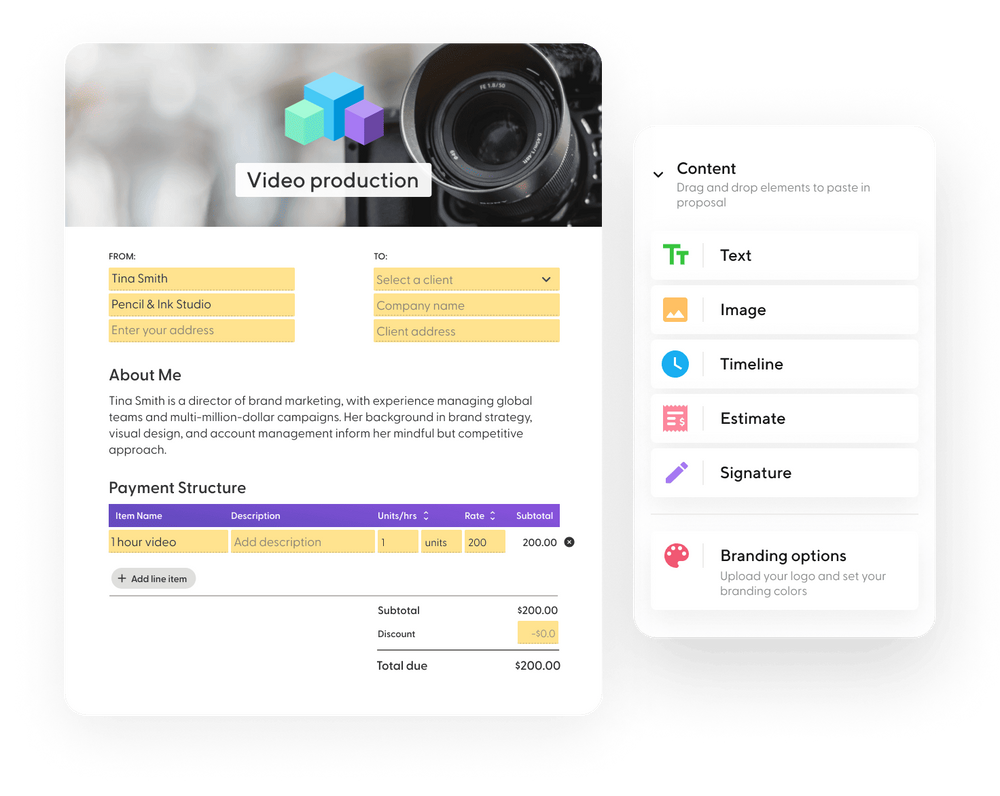So, you’re a freelancer and you’re trying to figure out why your written proposals aren't working, or maybe even how to write a successful one. Photography proposals in general can be tricky.
Mark Cuban once said, "Sales cure all."
Even a small photography business like yours needs sales to thrive. You may not be a professional writer but knowing how to write a solid photography proposal will set your business ahead of any competition, effectively taking those competitor’s potential sales and bringing them towards you. Freelance photography is an art, but also a business! If you’re skilled in both, there’s no reason you shouldn’t succeed.
Perhaps you’ve built a stellar website, but you’re working on writing that perfect photography proposal that knocks you out of the park as a freelancer. Here’s how to make your proposal truly great:
1. Know Who or What is Being Photographed
Who or what will you be photographing? What exactly is the product you’re selling? When you’re writing a photography proposal, the reciever won’t appreciate any vagueness. Make sure you call out exactly what you’re going for.
Consider different types of shots you’ll be delivering, and even list them in this part of your proposal. Pinpoint many exact shots, angles, people, things, etc. And don’t forget location – including the exact location of the shoot, especially if you’ve discussed this with the client already. Specificity helps you deal with less client emails and questions.
Be as professional as can be and you’ve improved your odds of making the sale with your proposal!
2. Determine What the Photography Project Will Cost
This is the part of the proposal your client is going to look at closely, and they may even skip over other things to look at it. They’ll want to verify that the budget for your freelance photography is within their price range. Makes sense, doesn’t it?
Do your research. This is where you’ll work out any logistics to ensure you get paid accordingly.
Freelancing can be tricky as payment can be fast and loose. Lockdown how much your photography services are worth, research what your client’s budget will be, and lay down some ground rules.
- How much will you be paid, all said and done?
- When you'll get paid?
- How you'll get paid (hourly, upfront, deposits, etc.)?
It’s important to be as specific as you can in a photography proposal to avoid any kind of confusion or gray areas.
3. Present a Deadline
As a freelancer, you know that meeting deadlines are crucial. If you don’t have a deadline, your life can become messier than it already is. Freelancers thrive on deadlines because it gives them a firm deadline to focus on the end goal.
Present a deadline in your proposal that works for you but can be earlier or later depending on the client’s needs. This gives them the flexibility to move it around based on the demands of their schedule. Prepare to be adaptable.
If you’ve already talked to your client about a deadline, this piece of the work is already done! Get it into this section of the photography proposal and explain why your deadline works.
4. Cover All Necessary Details
How do you plan to complete this photography project? In this section of the proposal, hammer out the logistics. Ask yourself questions like:
- What are you responsible for?
- What’s your client's responsiblity?
- What measures are you taking to ensure everything goes smoothly?
- How involved does the client need to be?
Think about what you’re selling. Are you into hard copies or all digital? What’s the pricing difference between the two? Here, you’ll be getting down to the nitty-gritty of exactly what you’re selling and why your client needs to buy it.
This part of the proposal is necessary because working out the details ahead of time, helps prevent problems later. Meet with your client and discuss everything you can think of – this way, you’re on the same page and any confusion is avoided.




